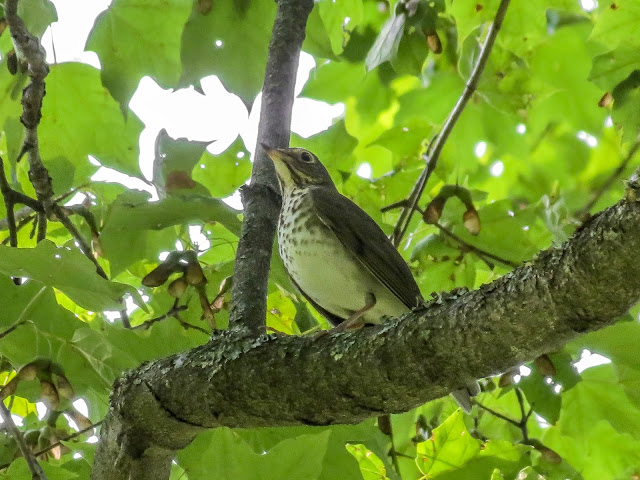
Monday, September 30, 2013
Sunday, September 29, 2013
Friday, September 27, 2013
Monday, September 23, 2013
EUROPEAN STARLING: 09/18/2010
Flickr Link: European Starling 09/18/2010-09:15 Okalona 2, KY
Second Edit
Flickr Link: European Starling 09/18/2010-09:15 Okalona 2, KY
First Edit
Sunday, September 22, 2013
Saturday, September 21, 2013
Wednesday, September 18, 2013
Tuesday, September 17, 2013
Monday, September 16, 2013
Sunday, September 15, 2013
CAROLINA WREN: 09/14/2013
Flickr Link: Carolina Wren (Male) 09/14/2013-08:18 Highview, KY
Flickr Link: Carolina Wren (Male) 09/14/2013-08:17 Highview, KY
Flickr Link: Carolina Wren (Male) 09/14/2013-08:17 Highview, KY
Flickr Link: Carolina Wren (Male) 09/14/2013-08:17 Highview, KY
Flickr Link: Carolina Wren (Male) 09/14/2013-08:18 Highview, KY
Thursday, September 12, 2013
Monday, September 9, 2013
Sunday, September 8, 2013
THRUSH [Unidentified]: 09/07/2013
I
went birding Saturday, September 7, 2013, and was stumped by several sightings.
I have pretty much narrowed them all down to an educated guess, except one.
The previous pic and the one-in-the-same this one:
Over
a span of about thirty minutes, I kept noticing that a male American Robin would
fly rapidly, directly, deliberately toward a tree and up about forty feet into
its foliage, resulting in the flushing out of another bird and a subsequent
pursuit. The bird being pursued would take refuge in another tree or bush lower
down, where the Male American Robin would further engage it, resulting in the
quarrelsome sounds of wings coming in careless contact with vegetation and
vocalizations of conflict. There was no physical contact between the birds
insomuch as the smaller bird was in a state of heightened awareness as well as proving
quicker and more agile than a male American Robin.
After
uploading the day’s memory card to my computer and increasing the exposure from
the darkness of the woods, I discovered photographs that maybe should have
ended all of my confusion and speculation.
Flickr Link: Veery Thrush 09/07/2013-10:09 Long Run Park, KY
Flickr Link: Veery Thrush 09/07/2013-10:10 Long Run Park, KY
Flickr Link: Veery Thrush 09/07/2013-10:10 Long Run Park, KY
In
my opinion, all three of the above photographs—which were taken shortly before
I noticed the chasing, and in a different part of the woods—are definitely those
of a Veery Thrush. Perhaps all of the photographs I have presented are those of
a Veery Thrush, but as of this morning, this Sunday morning, I was not so sure.
Concerning the first four photographs exhibited, the feather coloring seemed
too bold and too dark to be that of a Veery Thrush, and the bird’s tail
feathers seemed longer than I would expect for them to be those of a Veery
Thrush.
After
the briefest of research this morning, I initially narrowed the species down,
but only down to seven: the Ovenbird, the Veery Thrush, the Gray-cheeked
Thrush, Bicknell’s Thrush, Swainson’s Thrush, the Hermit Thrush, and the Wood
Thrush.
Some
of my research resources:
Thrushes
by Greg Lavaty
Ovenbird
Veery
Thrush
Gray-cheeked
Thrush
Bicknell’s
Thrush
Swainson’s
Thrush
Hermit
Thrush
Wood
Thrush
Now, after looking at tons of pictures, perusing
a lot, sometimes reading very carefully, and listening to scores of bird
vocalizations (none of which I recall hearing yesterday), I am ruling out the
Ovenbird—which is the only bird I considered that is not a thrush. I am also
ruling out Bicknell’s Thrush insomuch as its range does not put it on my side
of the Appalachian Mountains. Further, due to a lack of color brilliance with
regard to the birds I saw or photographed, I cannot believe that a Wood Thrush
was involved. That reduces the possibilities down to four; and for now, although
I would like to believe that those first four photographs are those of a
Gray-cheeked Thrush, I’m declaring those sightings [Unidentified] Thrush.
Saturday, September 7, 2013
Tuesday, September 3, 2013
RUBY-THROATED HUMMINGBIRD: 09/02/2013
Flickr Link: Ruby-throated Hummingbird (Male) 09/02/2013-10:26 Highview, KY
Flickr Link: Ruby-throated Hummingbird (Male) 09/02/2013-11:13 Highview, KY
Flickr Link: Ruby-throated Hummingbird (Male) 09/02/2013-12:37 Highview, KY
Flickr Link: Ruby-throated Hummingbird (Male) 09/02/2013-12:51 Highview, KY
Flickr Link: Ruby-throated Hummingbird (Male) 09/02/2013-13:30 Highview, KY
Flickr Link: Ruby-throated Hummingbird (Male) 09/02/2013-11:13 Highview, KY
Flickr Link: Ruby-throated Hummingbird (Male) 09/02/2013-12:37 Highview, KY
Flickr Link: Ruby-throated Hummingbird (Male) 09/02/2013-12:51 Highview, KY
Flickr Link: Ruby-throated Hummingbird (Male) 09/02/2013-13:30 Highview, KY
Monday, September 2, 2013
Subscribe to:
Comments (Atom)






_edited_1.jpg)
_edited_1.jpg)









































